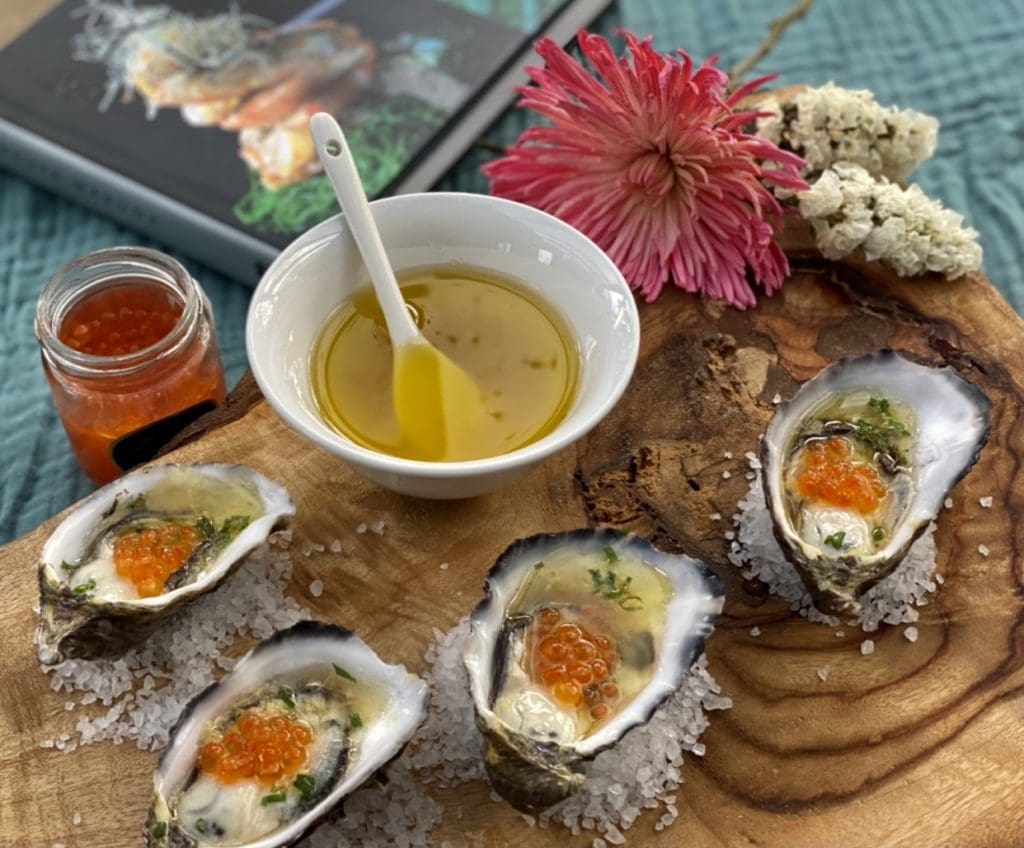
This delicate and beautifully balanced Japanese Dressing For Oysters is from Tetsuya. Reward yourself with some easy fine dining at home
The best of the best vinaigrette for oysters
I’ve never used ‘best’ in my headline until now. I wanted to save this moment for a recipe that I felt truly deserved this title and here it is! Say hello to the best oysters I’ve ever tasted in my whole life. This Japanese dressing for oysters is absolutely exquisite! The vinaigrette is delicate and perfectly balanced, this allows the natural flavour of the oysters to shine. If this hasn’t lured you in, maybe dollops of glistening caviar on top of the oysters may!
What makes me even more confident to state that these are the best oysters ever, is that this recipe came straight out of Tetsuya Wakuda’s cookbook. Tetsuya’s oysters are so spectacular that Mr Gordon Ramsay has backed it! Gordon described Tetsuya’s oysters as ‘memorable’. This is HUGE as I’m sure Gordon has eaten many amazing oysters in his lifetime.
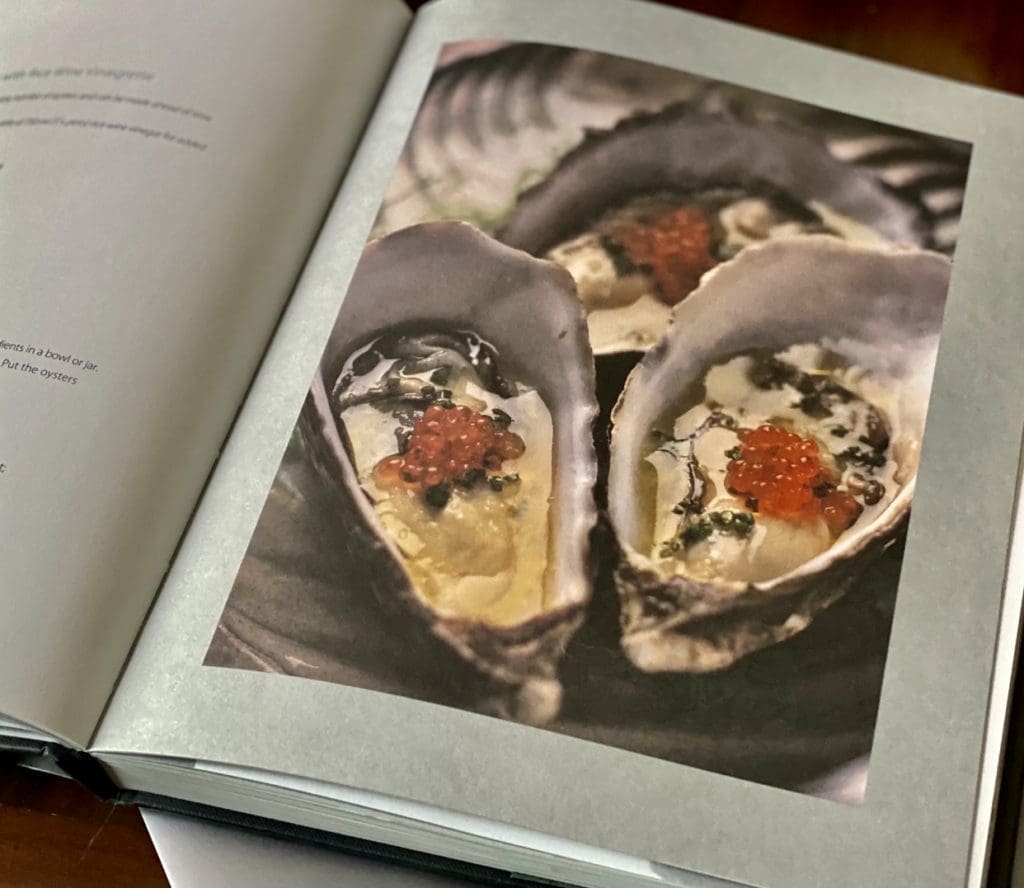
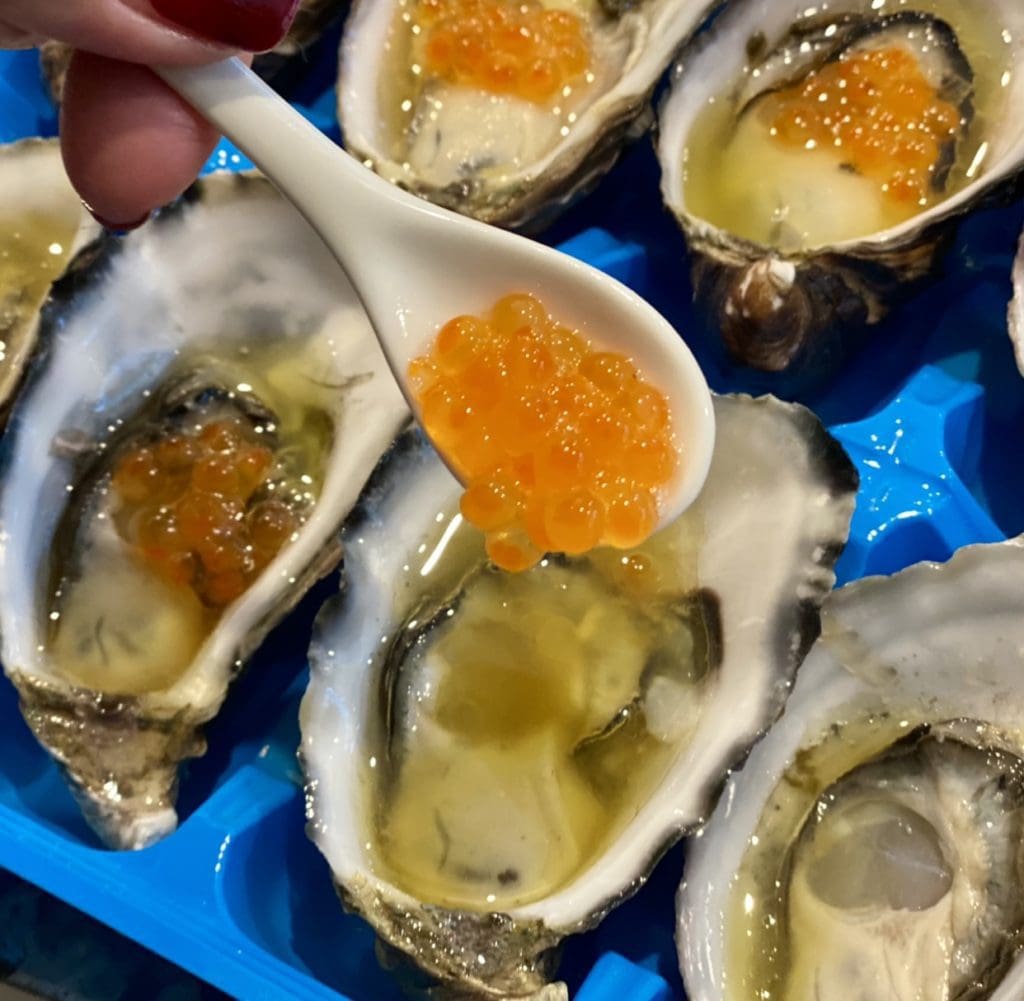
If Tetsuya ever stumbled to my site, he’ll probably be a little scared of me. I’m obsessed with his cooking, recipes and I’m also fascinated with his accomplishments. My blog hasn’t been up for a year yet and I have written about my dining experience at Tetsuya’s restaurant and posted his Karaage Fried Chicken recipe.
After dining at his restaurant, I bought his cookbook. The book was a second-hand copy that came with Tetsuya’s autograph. “Oooh, I wonder if this book will be worth thousands of dollars in 50 years time” I thought to myself, followed by “OMG this is so cool!”.
I wanted to follow his oyster recipe to the tee, but I couldn’t get my hands on ocean trout roe so I used salmon. Also, there was way too much dressing, even for 12 dozen large Pacific oysters, so I halved the ingredients. The result is still pure magic, the most divine tasting oysters ever!
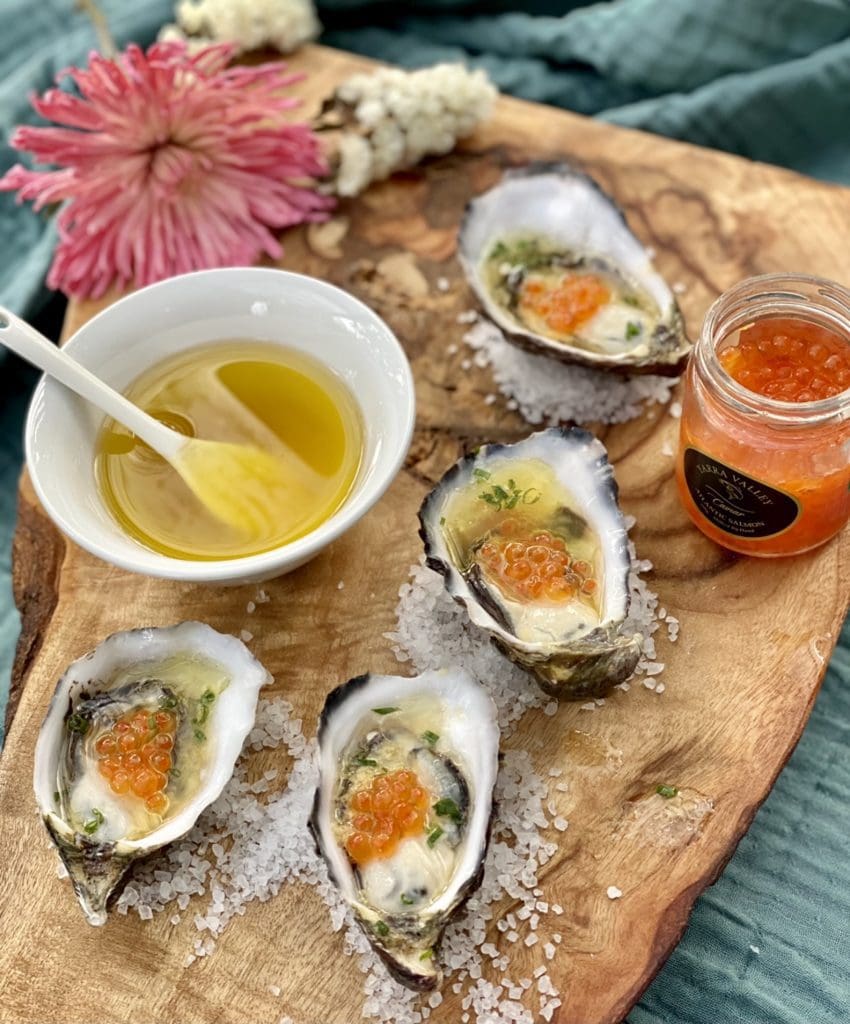
Good things never last long!
Caviar happens to be the name of my posh kitty, the Siberian one. I named him Caviar, as he was elegant and stunningly beautiful. I just love the look of salmon or fish roe, they’re shiny vibrant and perfectly rounded. It makes any dish look sophisticated.
I’ve eaten different fish roes, from the cheapo ones you get at some sushi trains to the exquisite ones you get in fine dining places. However, I have never purchased a jar of caviar until now.
My sister Nara and I went halves and purchased a jar of Yarra Valley Salmon Caviar (not sponsored) at our local fishmonger. I was actually looking for Ocean Trout roe so I could stay true to Tetsuya’s recipe but wasn’t able to find any. The only jar that was on offer was 100gms (1.8oz) for $44 (USD 32) 100gms may not sound much but that’s a lot of caviar!
The label on the jar advised us to consume the entire jar of caviar within 4 days after opening.
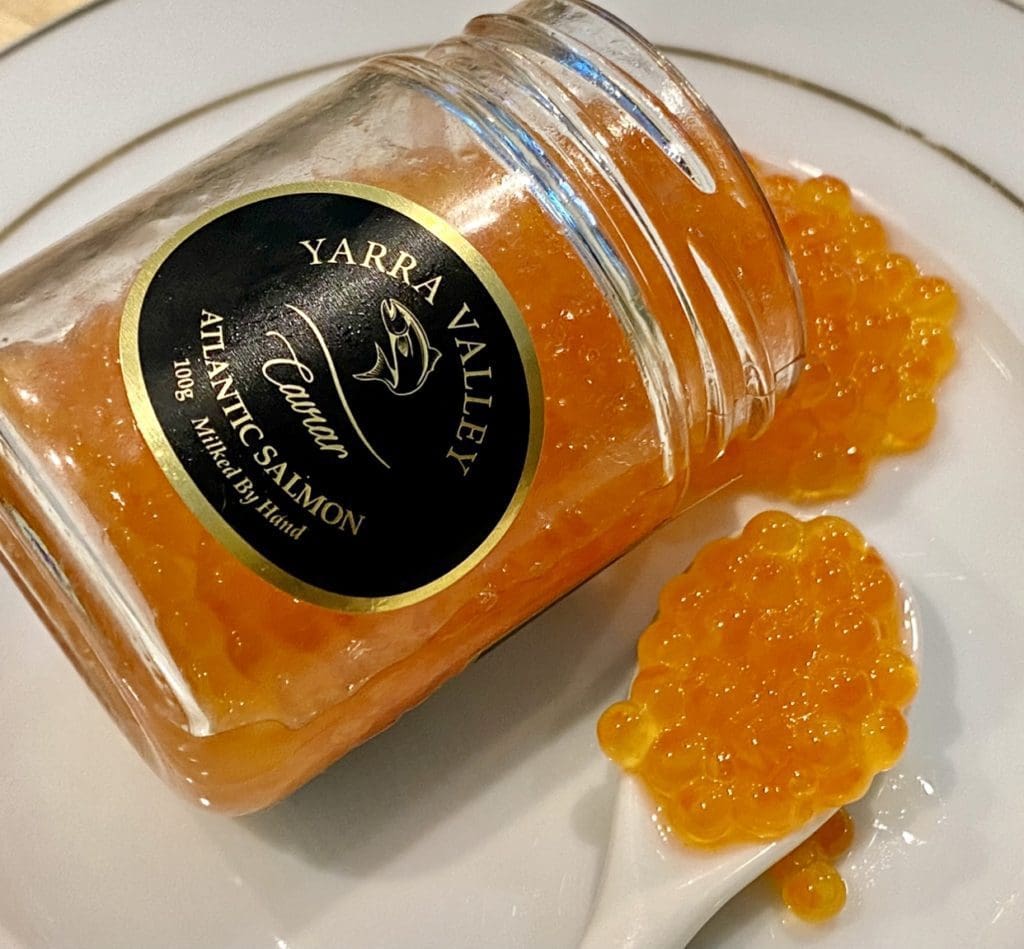
Seriously, that jar provided us with so much caviar! I’ve used some in an upcoming recipe but there was still a quarter left remaining in the jar. Luckily, Nara came to the rescue and polished it off a day before it expired. She happily ate them with cheese and crackers. I forgot to offer a few pearls to my kitties, I would’ve loved to see their reaction!
From doing a bit of research, I understand that salmon caviar is larger and milder in taste than ocean trout. I’m definitely not a caviar connoisseur, but I couldn’t tell the difference in the roe when I ate them with the oysters at Tetsuya, so using salmon caviar was a great substitute.
Here’s to more oyster love:
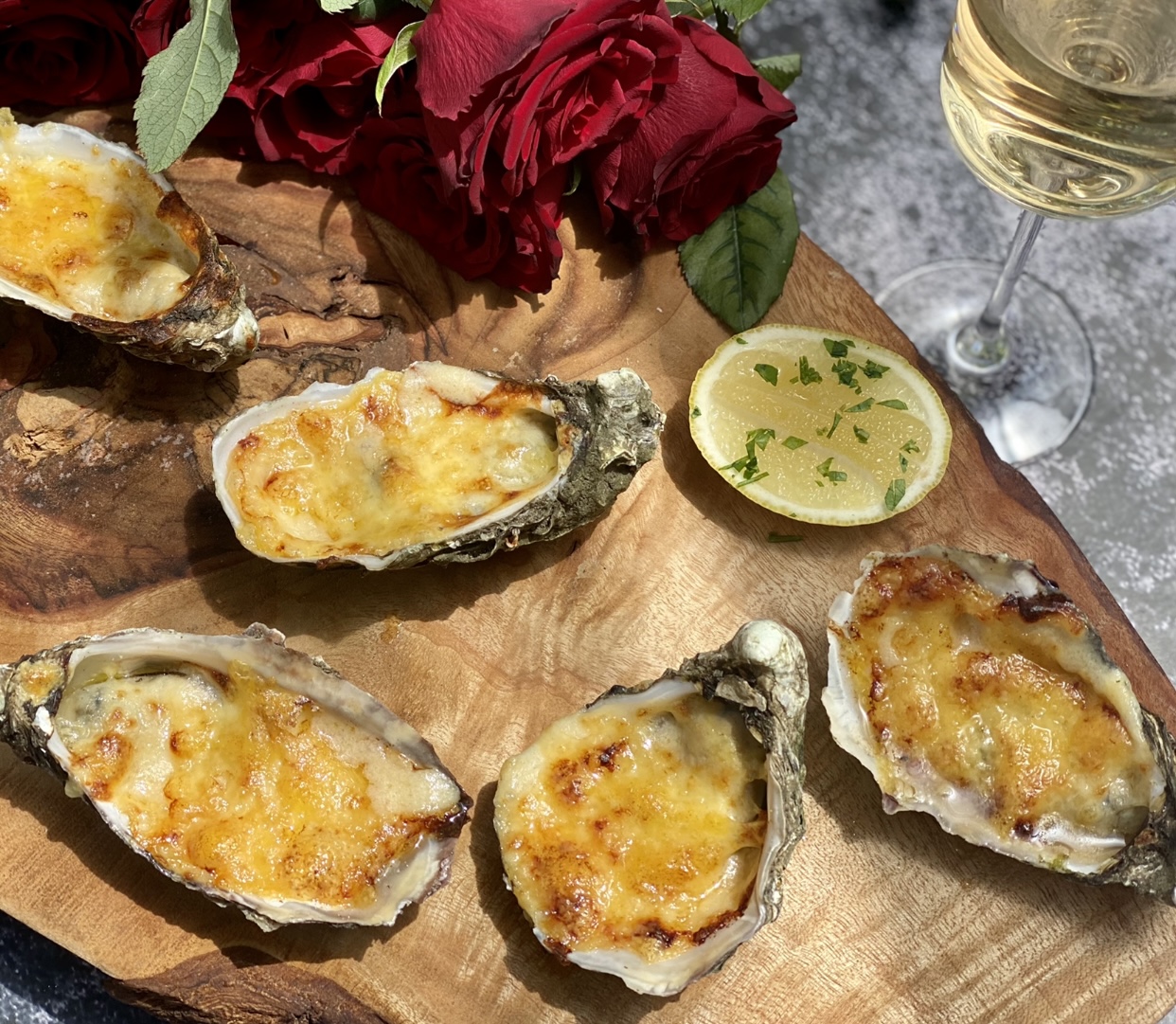
Oyster Mornay
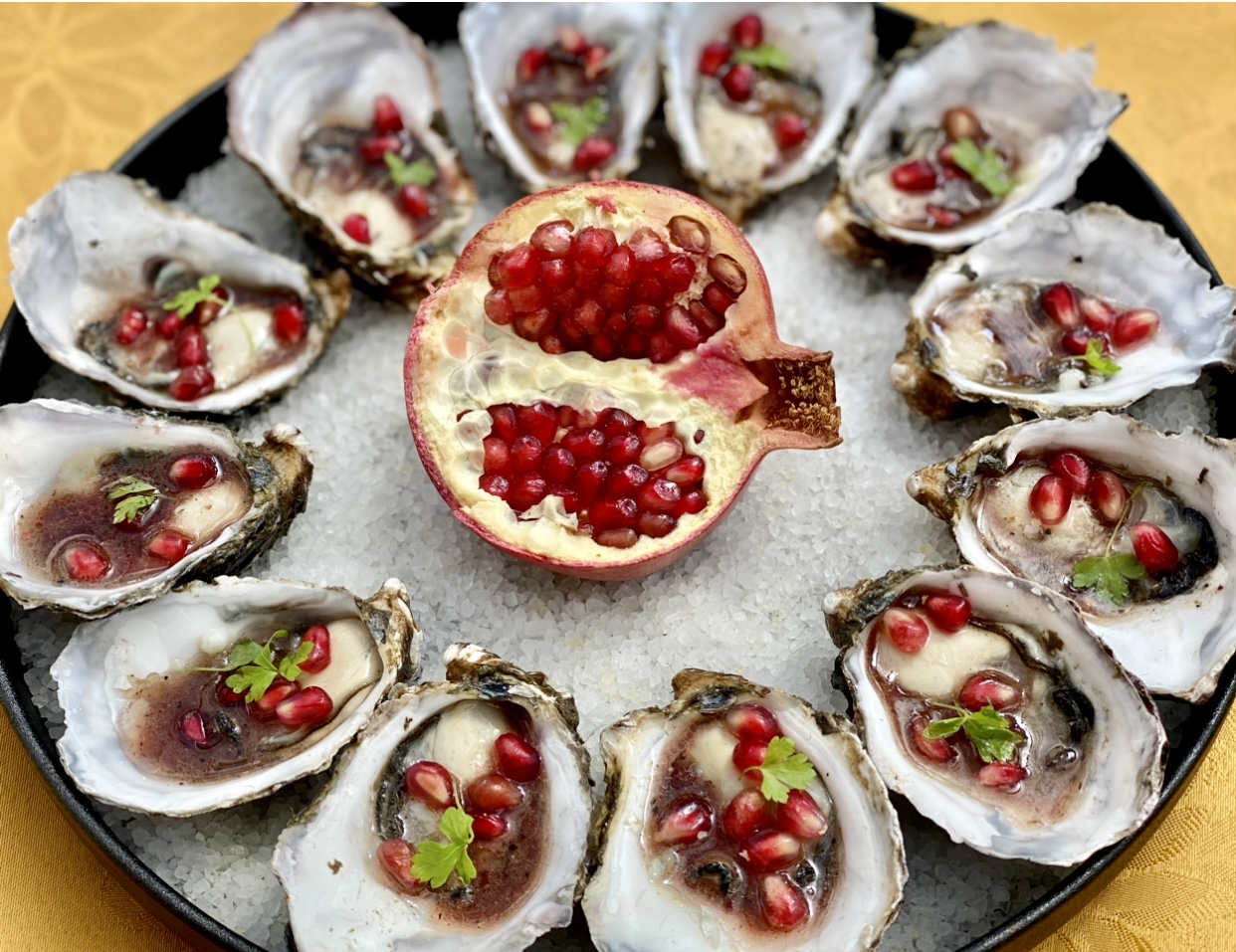
Oysters with Pomegranate Vinaigrette
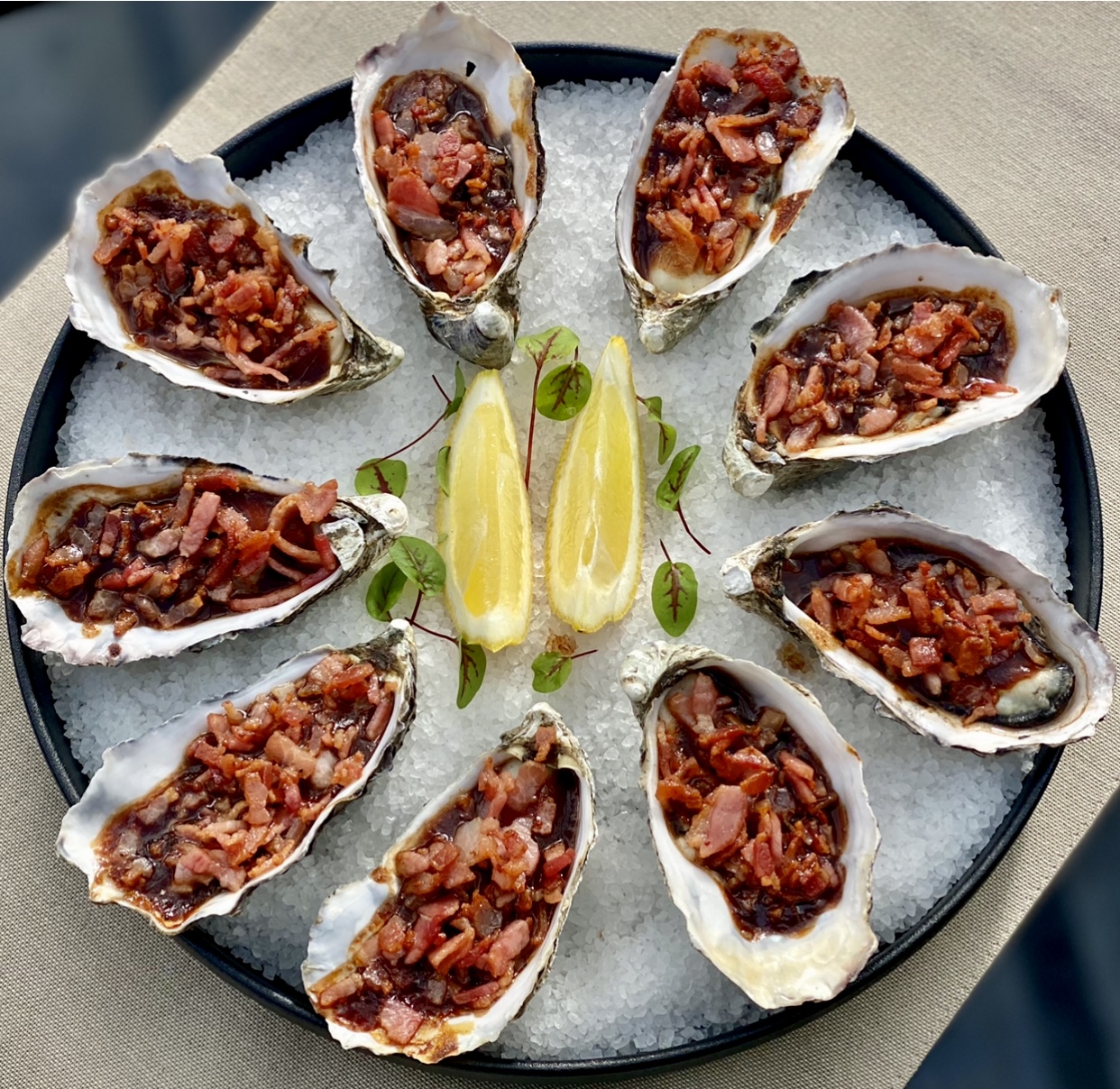
Oysters Kilpatrick
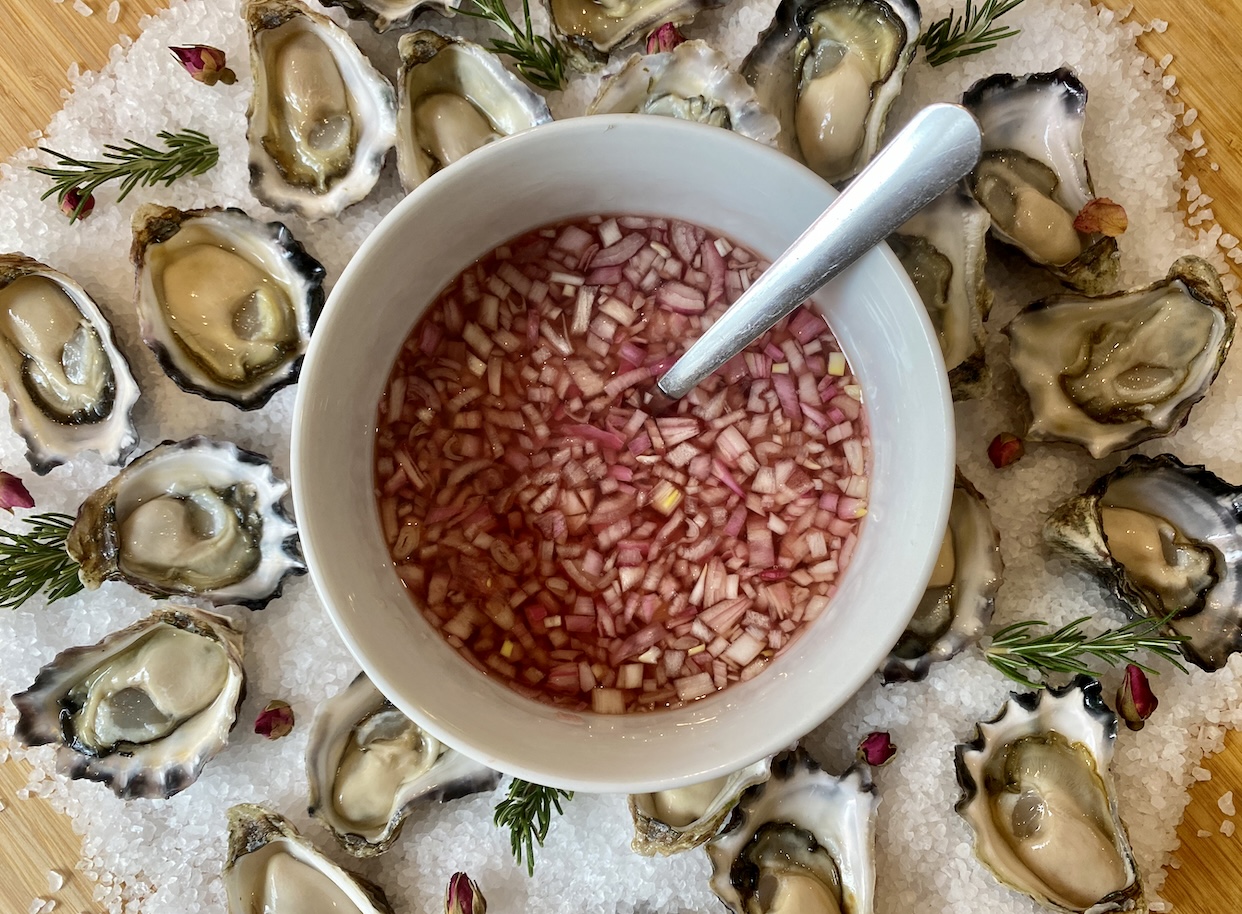
Mignonette Sauce For Oysters
What to do with with a husband that doesn’t eat seafood?
I’ve already tried selling my hubby on eBay and offered to give him away for free but nobody took my offer! I’m joking, and I know if he said this about me, people would probably burn him at the stake, even if he was also joking!
My husband, Tomasi, loves fish, but he isn’t a fan of any other kinds of seafood. This makes things a bit complicated as Nara and I can’t get enough of seafood! So when I cook seafood I always feel guilty as I know he’ll only eat it to please me.
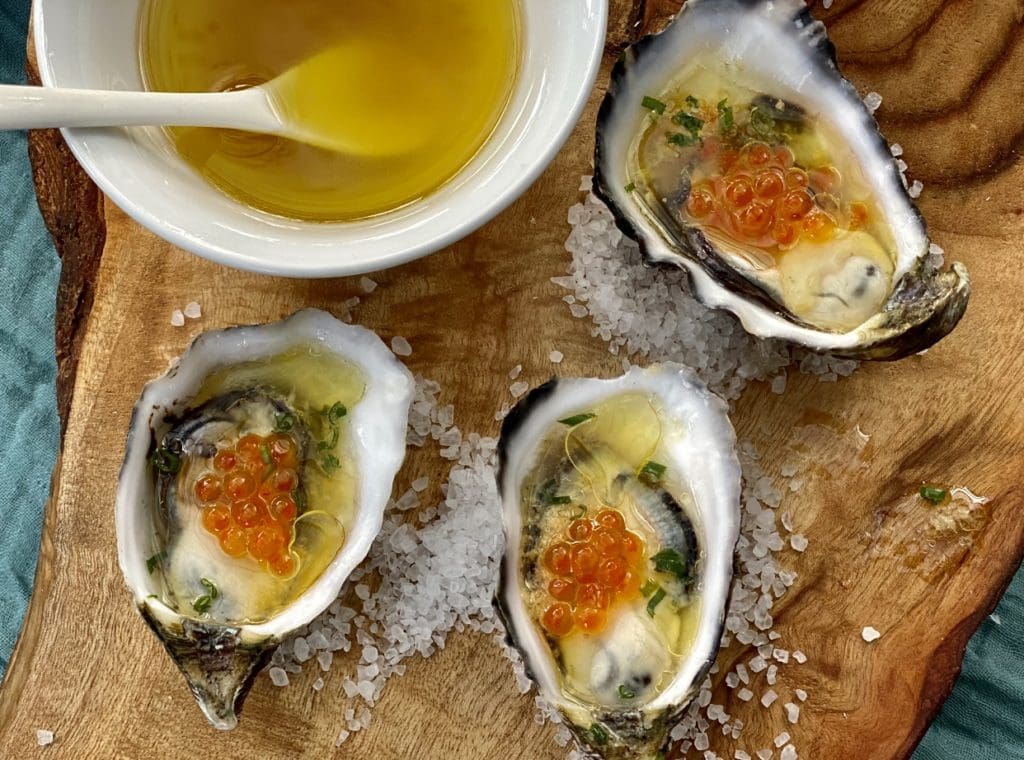
However, I’ve discovered a pattern with him. Whenever I’ve covered the seafood with loads of cream, cheese or bacon, he’d happily eat the seafood and enjoyed it even.
BUT I still need to work on him. When I made Tetsuya’s oysters, I asked him to come and try some with us. He was working from home in our office downstairs, but opt to give it a miss. His excuse was “You guys have a much better knowledge of seafood than I do”. Unfortunately for him, these oysters were dairy and bacon free! Not even Tetsuya’s recipe could convince him. Of course, Nara and I weren’t at all disappointed with his decision. We had 6 incredibly fresh, beautiful and delicious oysters to ourselves. I tried for 7 but unfortunately for me, Nara can count!
Subscribe to 3CatsFoodie’s FREE Newsletter

For the latest recipes and other fun stuff!
Ingredients for Japanese Dressing For Oysters
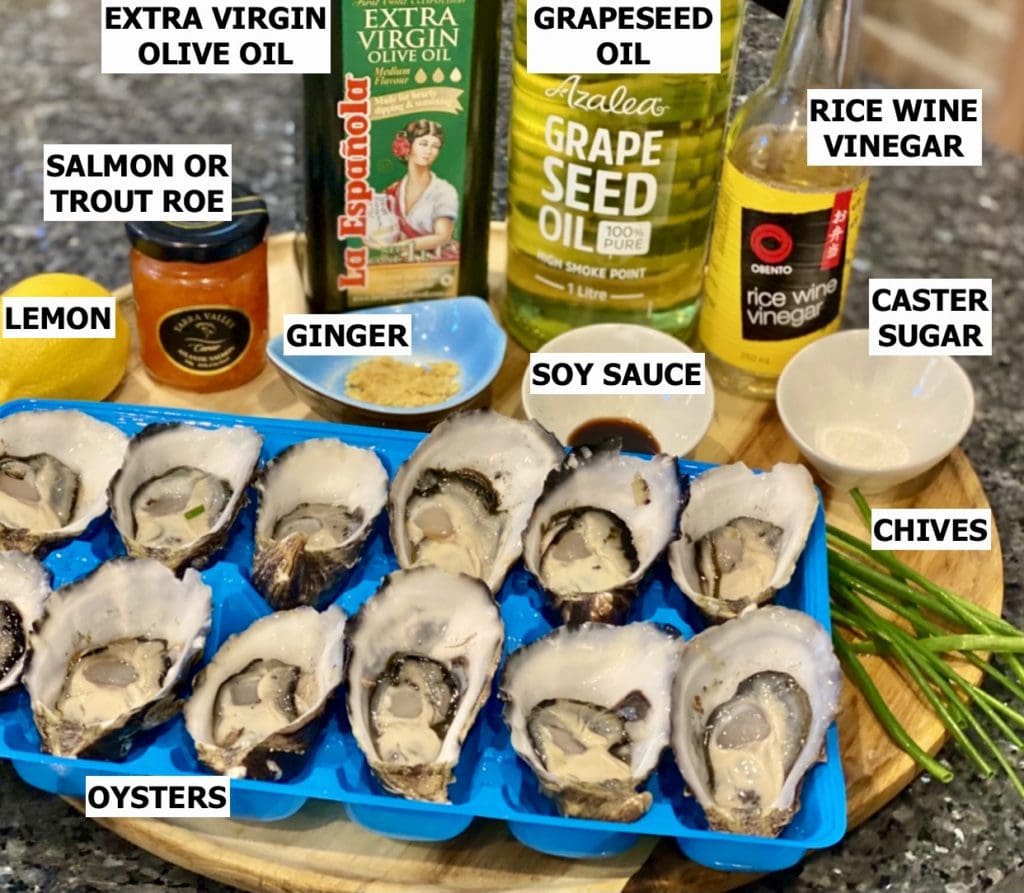
Oysters – Tetsuya uses Pacific oysters, these oysters were originally from Japan and the Pacific coast of Asia, it’s now farmed around the world. Pacific oysters are quite large and meaty, with a mild taste of the sea. If you can’t get your hands on Pacific oysters, don’t worry as any variety of oysters would work as long as it’s large, raw and super fresh.
Fish roe – Tetsuya uses ocean trout roe, which is hard to find here. I had to settle with salmon roe which was easily found at my local fish market. Salmon roe is milder in taste but works perfectly as a substitute in this recipe.
Soy sauce – Use light or regular soy sauce but avoid the dark or sweet soy sauce varieties.
Rice wine vinegar is mild tasting and not as harsh as red or white vinegar. You can pick up a bottle at the International section of the supermarket or at an Asian grocery store.
Grapeseed oil is from grape seeds, it has a super clean and neutral taste with a high smoke point. If you don’t have grapeseed oil and don’t wish to go out and buy one, you can use mild olive oil, canola or any flavourless oil.
Caster sugar is also called ‘superfine sugar’ or ‘baker’s sugar’. It has a finer consistency than white or granulated sugar but it’s not the same as powdered sugar (also known as confectionary or icing sugar)
Watch how to make Japanese Dressing For Oysters
Written Step-by-step guide with photos
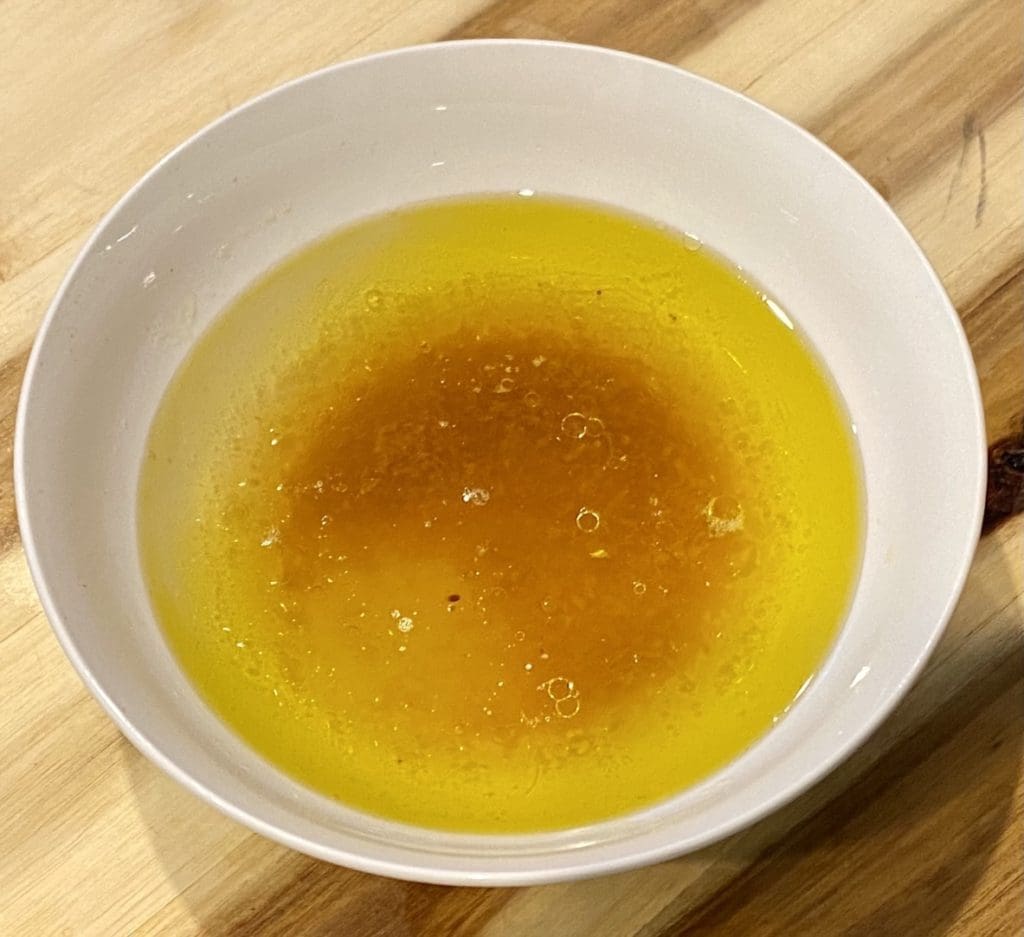
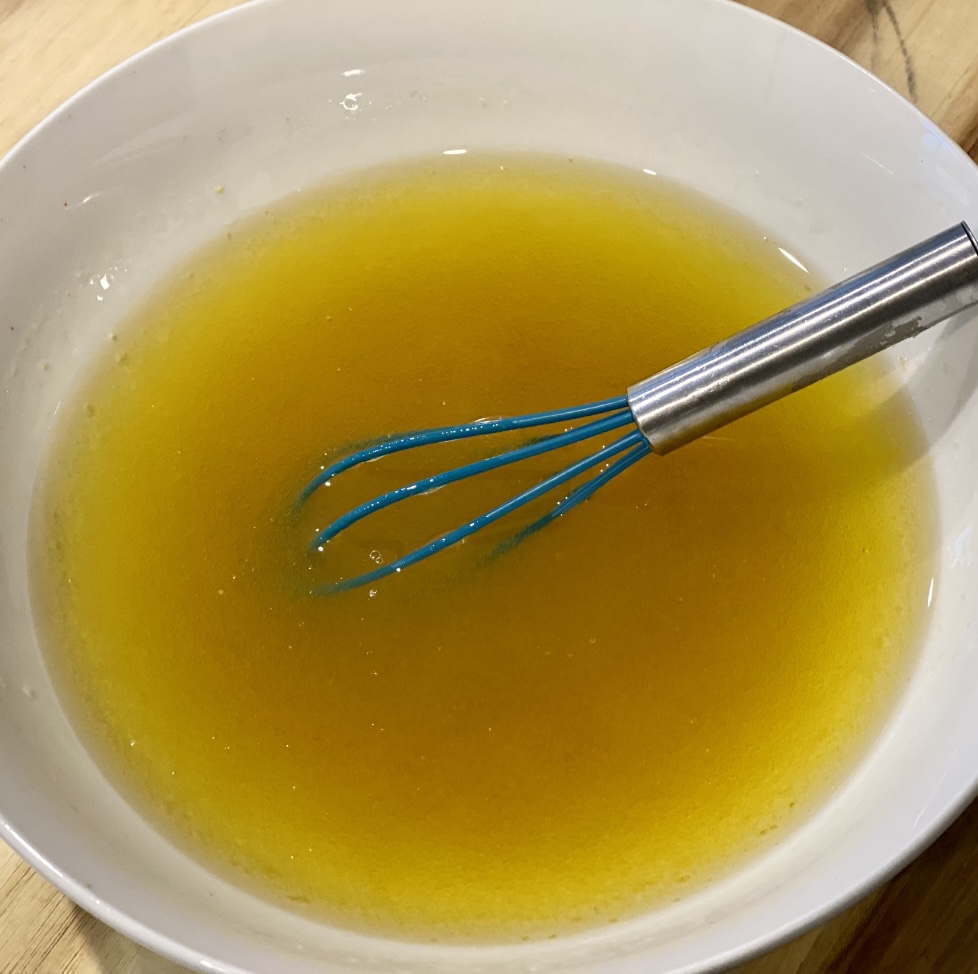
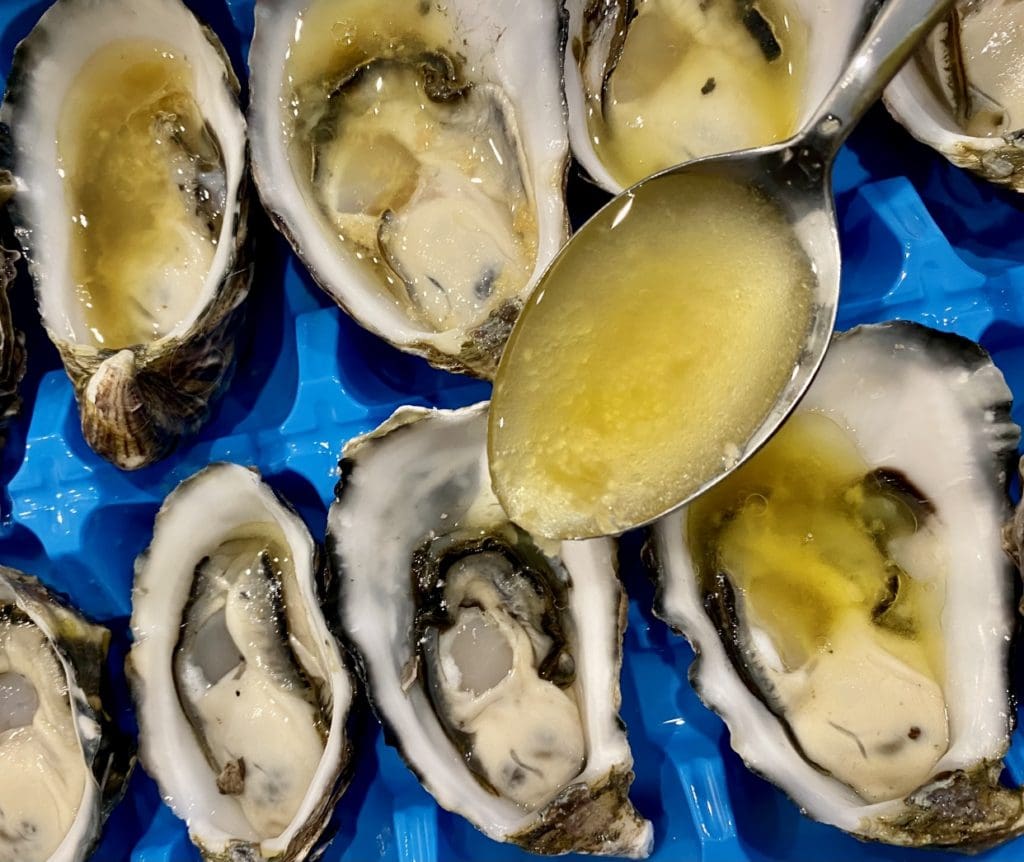

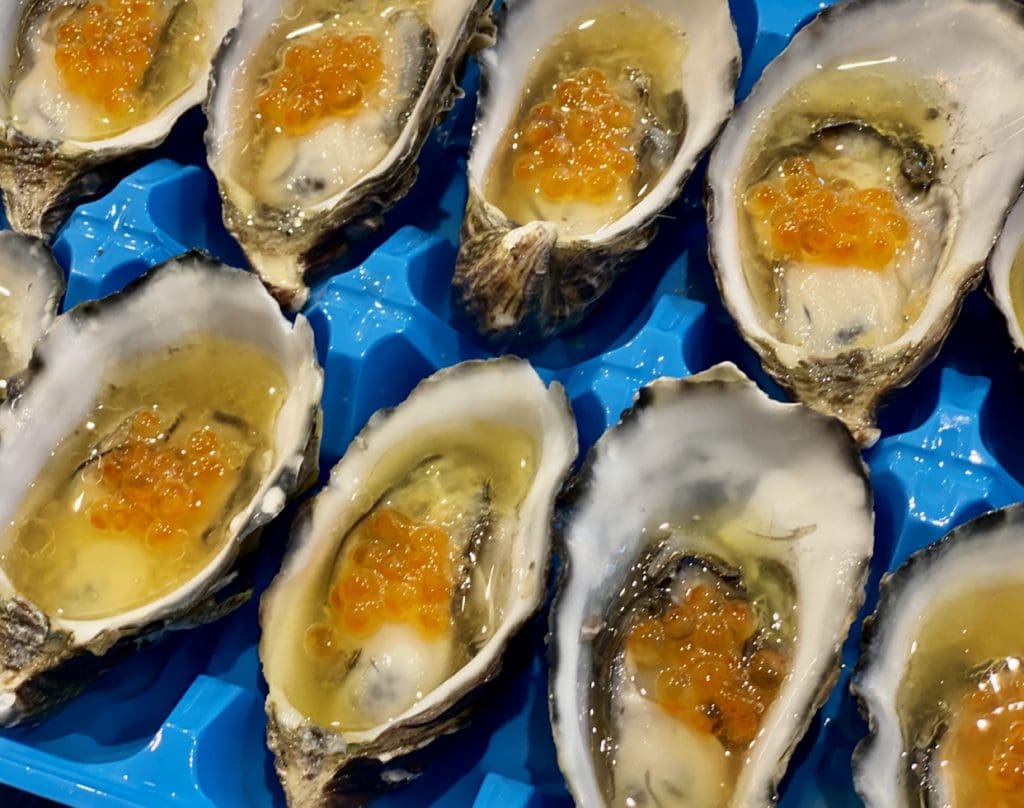
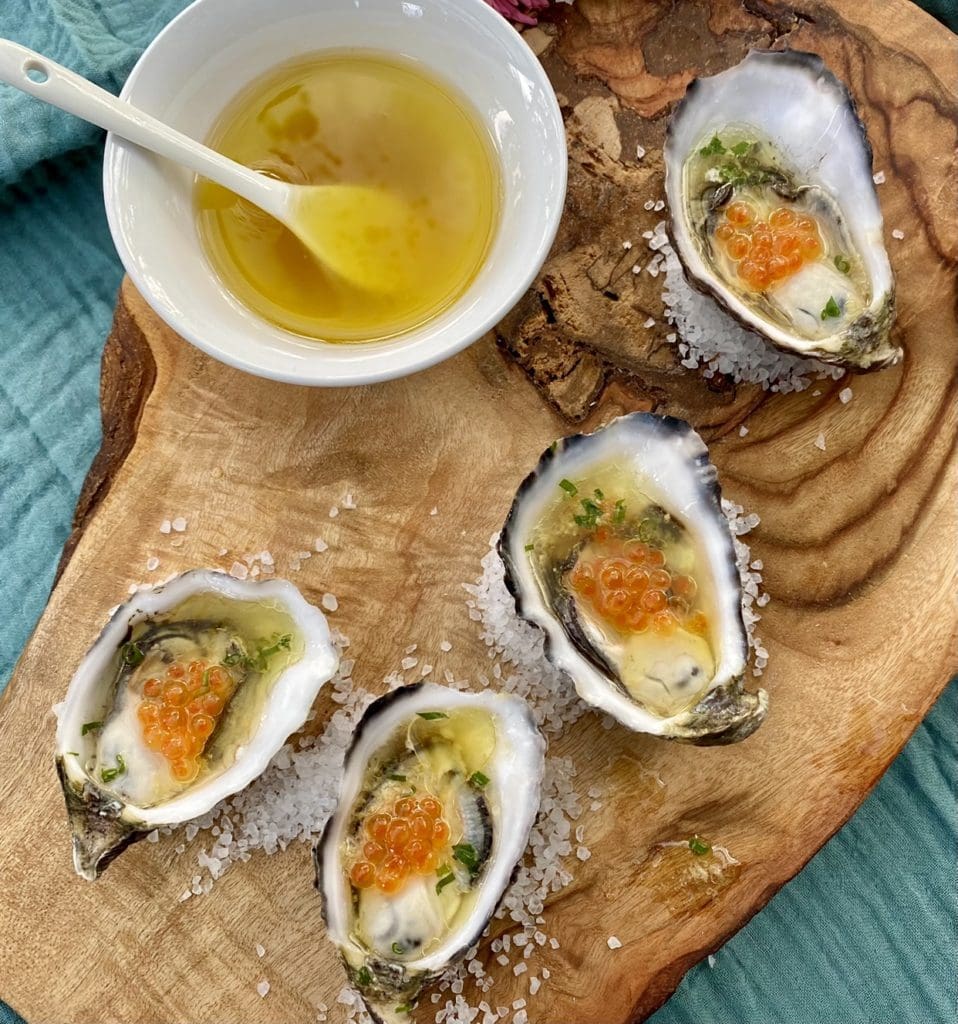
If the oysters came on a tray, leave them on it. This will help the oysters sit upright when adding the toppings. You can also stand the oysters on top of some rock salt.
In a small bowl add in all the vinaigrette ingredients together and mix well. Give the vinaigrette a quick stir before spooning a tablespoon on top of each oyster. Finish by adding half a teaspoon of roe on each oyster and sprinkle on some chives. Serve and enjoy immediately.
I’ve used a third-party application to calculate the calories and nutritional information, so please use this as an approximate guide only.
Cooking measurements are in Australian standard spoon and cup measurements. For specific details and conversions, visit our Australian Cooking Measurements page.
I would love your feedback and support if you made this recipe. To do this, please rate this recipe and provide a comment by scrolling down this page or by clicking that green circle on the bottom left. An email address is required (for spam), but it won’t be published. I would also love to see your dish, so don’t forget to tag me on my Instagram account ‘3catsfoodie’
Cheers – Cat T
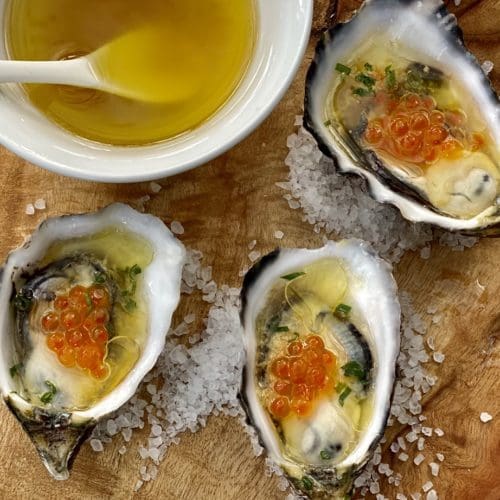
Japanese Dressing For Oysters
Ingredients
- 12 Pacific Oysters in shell (raw, cleaned and opened) (NOTE 1)
- 2 tbsp ocean trout roe (or salmon) (NOTE 2)
- 2 tsp chives (finely chopped)
FOR THE VINAIGRETTE
- ½ tsp finely grated ginger
- 2 tbsp rice wine vinegar (NOTE 3)
- ½ tsp caster sugar (NOTE 4)
- ½ tsp soy sauce (NOTE 5)
- 3 tbsp grapeseed oil (NOTE 6)
- 1 tbsp extra virgin olive oil
- 1 tsp fresh lemon juice
Instructions
- If the oysters came on a tray, leave them on it. This will help the oysters sit upright when adding the toppings. You can also stand the oysters on top of some rock salt.

- In a small bowl add in all the vinaigrette ingredients together and mix well. Give the vinaigrette a quick stir before spooning a tablespoon on top of each oyster.

- Finish by adding half a teaspoon of roe on each oyster and sprinkle on some chives. Serve and enjoy immediately.


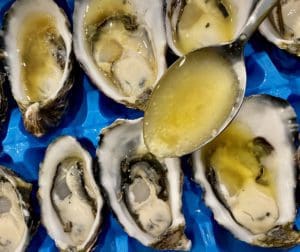
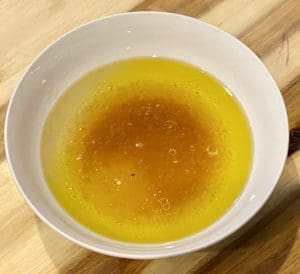
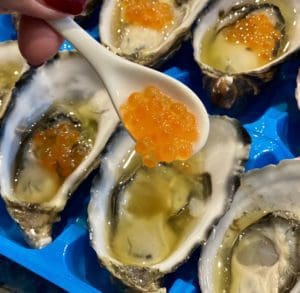


Phenomenal. Tetsuya’s a genius. BIG TIP, don’t skip the salmon roe because it’s expensive.
Agreed! Thanks Watson for leaving a comment 🙂
We had Tetsuya’s oysters years ago and fell in love.
Found your page when searching for his recipe and couldn’t believe how easy it is.
2 dozen oysters gone in a flash. This is the real deal.
Just exquisite! Thanks for sharing
Hi Maylee,
Thanks for taking the time to leave a comment!
Definitely a simple recipe, and many of the recipes in Tetsuya’s cookbook are home cooking-friendly.
Glad you enjoyed these oysters, they’re still my favourite way to have oysters!